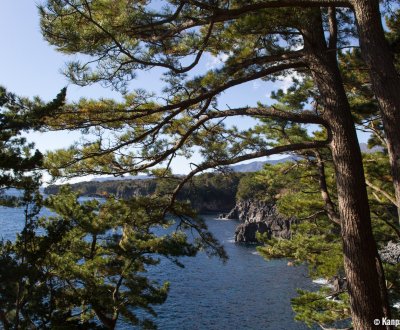Izu Peninsula
Shizuoka’s Seaside Destination
Izu Peninsula is an arm of land projecting between Suruga and Sagami bays, in the eastern side of Shizuoka Prefecture, in the south of Mount Fuji in Japan. An area of volcanic activity, it attracts sightseers with its onsen hot springs, forest hiking trails and waterfalls, remarkable mountain views and sand beaches by the ocean.
Izu Peninsula, formed by volcanic activity, is located in the south of Mount Fuji 🗻 in Shizuoka Prefecture. Its abundant and beautifully rugged landscapes are part of the Fuji-Hakone-Izu National Park and included in the UNESCO’s remarkable geological heritage since 2018 as a "Global Geopark."
Water is a prominent element of its environment, either fresh, springing from the mountains at the center of the peninsula, or saline, with Sagami Bay and Suruga Bay surrounding the land. Consequently, the culture of wasabi and cuisine based on seafood are the local gastronomy’s staple.
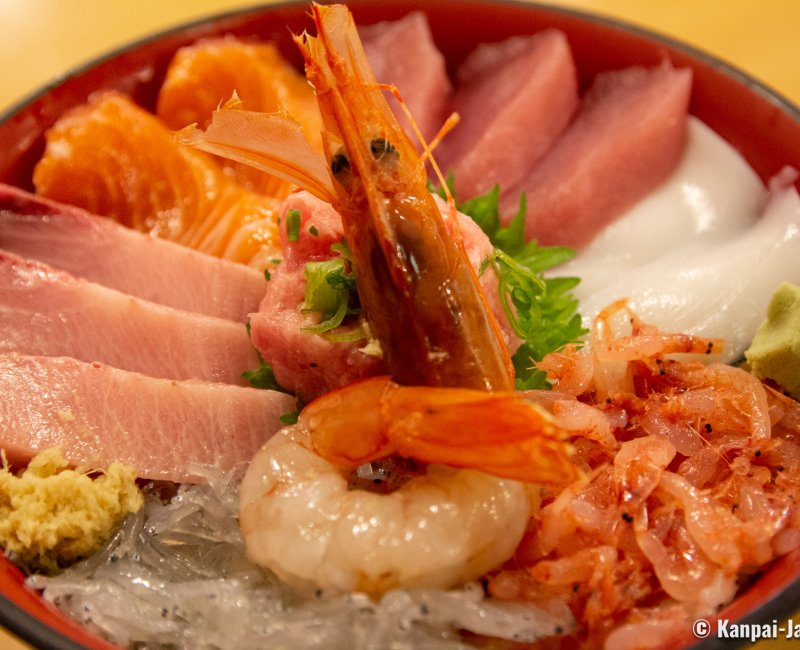
Izu Peninsula is one of the Tokyoites' favorite seaside destination. Train and car 🚙 are the best ways to go there from the capital ; allow about 1 to 3 hours for the shortest rides, thanks to:
- The Tokaido Shinkansen 🚅, serving Atami and Mishima at the entrance of the peninsula; and,
- The JR Limited Express Odoriko, that is hugging the eastern side of the peninsula, bound for Ito and Shimoda seaside cities in the south, and connecting to its center to the onsen ♨️ village Shuzenji, nestled in the forest.
Izu’s landscapes are a sight even from the train and some have carriages specifically laid out so that passengers can fully enjoy the view as they travel.
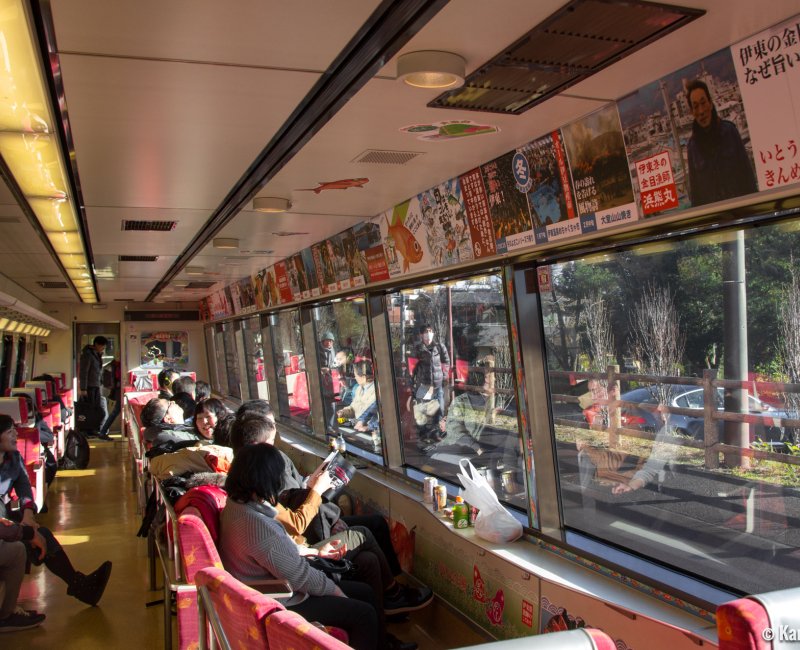
The region extends in the Philippine Sea to a small 10-ish islands archipelago, from Oshima being the largest and closest island to Aogashima the most remote one. The Izu Archipelago is administered by Tokyo prefecture, like Ogasawara Islands, and is reachable by plane ✈️ or by boat depending on the islands’ respective facilities.
Discovering nature with the seasons
An ideal place to relax, Izu is a good nature gateway blown by the marine breeze. It encompasses seaside, green forests and a view on remarkable rock formations. The peninsula is a great sightseeing destination to visit all year round. The following non-exhaustive list shows the various activities available according to the season:
♨️ Winter: hots baths and view on Mount Fuji
- Visit Atami Castle 🏯, MOA Museum of Art and the 7 hot springs of the city for a soft skin. Fireworks are fired from the main beach all year round;
- Stay at a ryokan inn in Izu’s oldest thermal resort Shuzenji;
- Admire Mount Fuji from elevated view points such as the suspended bridge of Mishima Sky Walk, Mount Omuro in Ito or the Izu Panorama Park’s ropeway in Izunokuni.
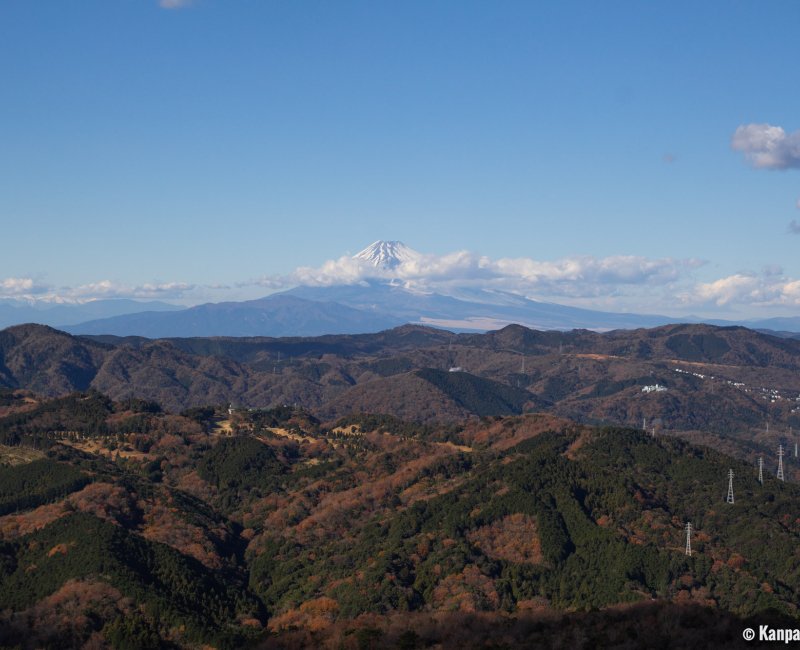
🌸 Spring and autumn: colors’ changing
- Stroll in Atami Baien Park during the blooming of the ume plum trees from January to early March, then during the maple trees’ red foliage season from mid-November to early December;
- Watch the early cherry trees 🌸 kawazu-zakura blooming as soon as February along the Kawazu River;
- Make the most of the camellias flowers season from January to early April and discover Oshima Island, off the peninsula;
- Walk the path of Shuzenji bamboo grove, to the vermilion Katsura bridge enhanced by momiji 🍁 in autumn;
- Enjoy a family outing in Shuzenji Niji-no-Sato theme park, where night illuminations take place during the koyo period.
🏖 Summer: forest hikes and beaches
- Discover the wasabi terraced fields in Ikadaba, in the heart of the large forest of Izu City, 350 meters above sea level;
- Refresh thanks to waterfalls in the forest, such as Asahi waterfall in Izu and the famous Kawazu 7 Waterfalls;
- Swim in the sea at one of the Peninsula’s beaches 🏖, such as Shirahama Beach in Shimoda, or Iwachi or Atami beach;
- Breath the ocean spray and the perfume of maritime pine trees along the jagged coastline from the suspended bridge of Jogasaki Kaigan, and pass through Irozaki Cape at the southern end of the peninsula, then along the western side around Dogashima.
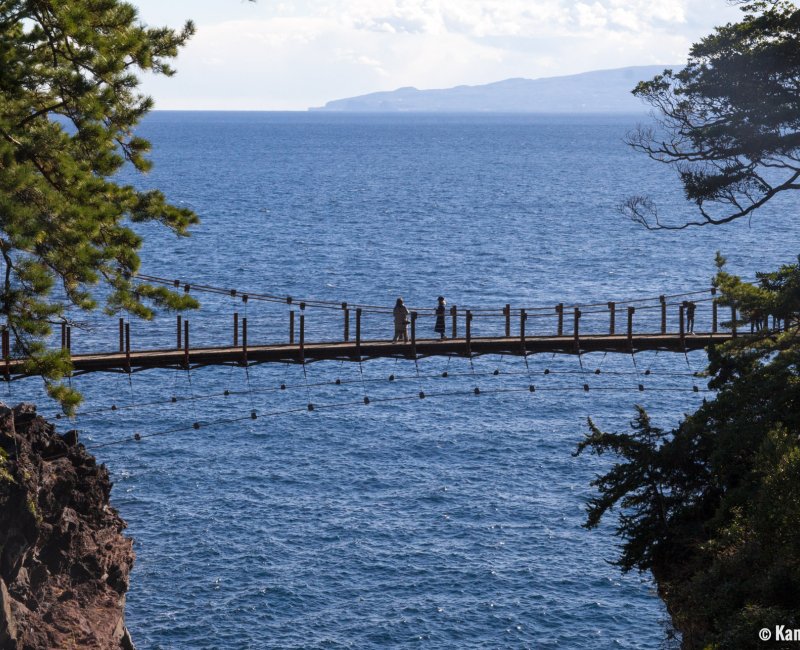
A handful of temples and shrines are also open all year round to pray for good luck or for protection against natural disasters (earthquakes, typhoons 🌀) to which the peninsula is frequently subjected to. Lastly, for history amateurs, Shimoda was the port where Commodore Perry’s Black Ships moored in 1854, in a key event of the end of the Edo period (1603 – 1868) leading to the forced opening of Japan to the world, especially to trade with the United States.

